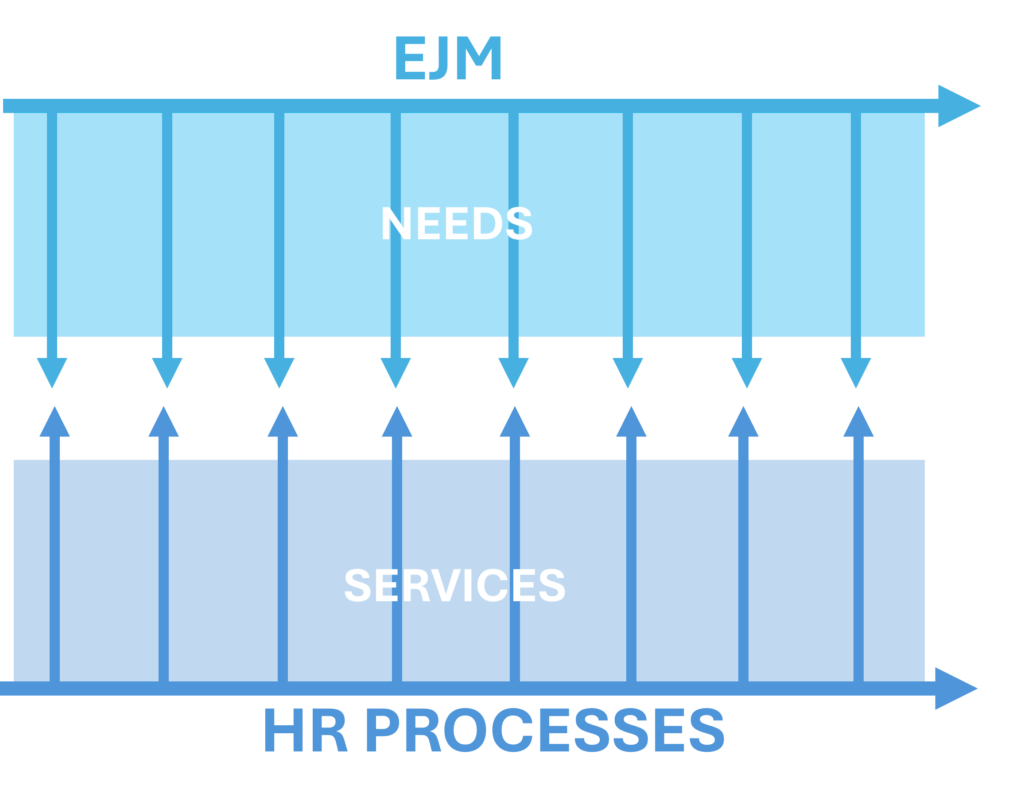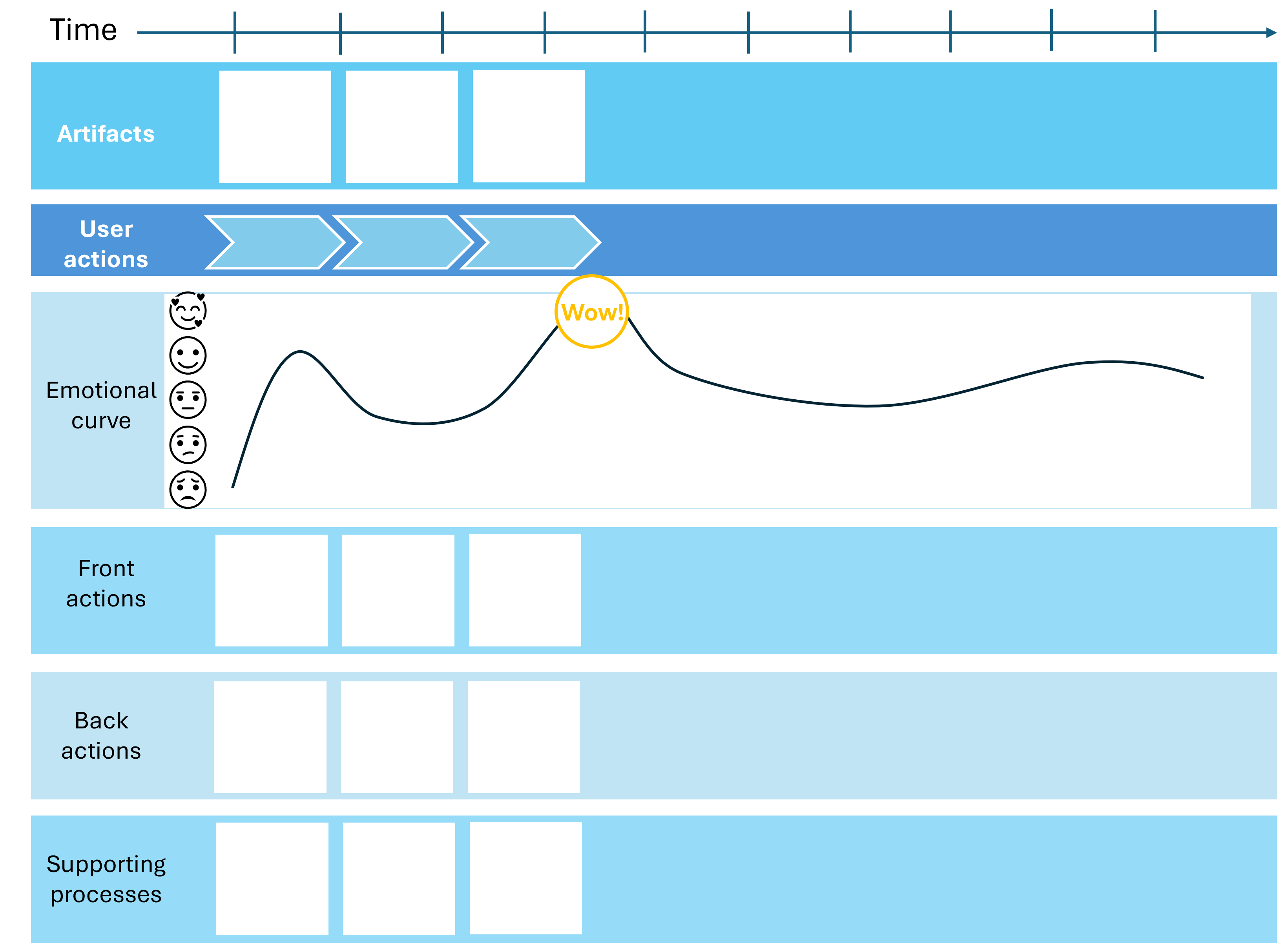Back in 2016, without a single Russian case study to reference, we built our first Employee Journey Map (EJM) (link: portfolio). It wasn’t about following trends—it was a necessity.
We needed a tool that could make HR transformation into a service model structured, clear, and user-centered.
Why Do We Need Journey Maps?
EJM helped us:
- Visualize and structure all internal processes
- Define relationships and priorities between services
- Align employee needs with corporate services and workflows
A service is simply the visible part of an internal process—just like a mushroom is the visible part of a much larger mycelium.

Users don’t care how a process works behind the scenes. In fact, if they start noticing it, that’s usually a sign something has gone wrong.
Yet, most service ecosystems suffer from the same issues:
- Gaps—services that fail to meet all user needs
- Redundancy—services that exist but serve no real purpose
- Misalignment—services that appear at the wrong time or in the wrong place

So how do we ensure that services are delivered where and when they’re needed? That’s where Journey Mapping (CJM/EJM) comes in.
CJM: More Than Just a Diagram
Journey maps come in different forms, depending on the product, service, or industry. But they all share one core principle—they focus on real people and their experiences. Unlike process diagrams, communication flows, or regulatory documents, CJMs capture what the user actually goes through.
A CJM is a layered framework. Each layer includes factors that directly or indirectly impact the user experience and, most importantly, elements we can improve.
By combining user research with emotional mapping, frontline interactions, and backstage processes, we can pinpoint exactly where and how to make changes.
The Problem with “CJM Templates”
I’ve often been asked: “Can you share a CJM template?” This question makes as much sense as asking a scientist for a “template” of what they’ll see under a microscope.
A CJM is not a document—it’s a methodology. Every journey map is unique, tailored to the specific product, service, or problem it’s addressing.
The biggest mistakes with CJMs:
- When the map becomes a goal instead of a tool
- When teams look for a quick fix instead of understanding the user
- When templates replace real insights and empathy
Unfortunately, I’ve seen many designers and consultants selling pre-made CJM templates that look visually impressive but lack true user insight. The result? A polished graphic instead of an actual understanding of the experience.
Why CJMs & EJMs Are Essential to HCD
Despite the growing number of frameworks, Journey Mapping remains one of the most effective tools in Human-Centered Design (HCD). It helps teams:
- Systematize services and products
- Prioritize key pain points before making changes
- Create experiences that actually work for users
If you’re working on a CJM/EJM and it feels like a mere formality, stop and ask yourself: What do we really know about our users? If the answer is unclear, you’re not ready to map the journey just yet.

